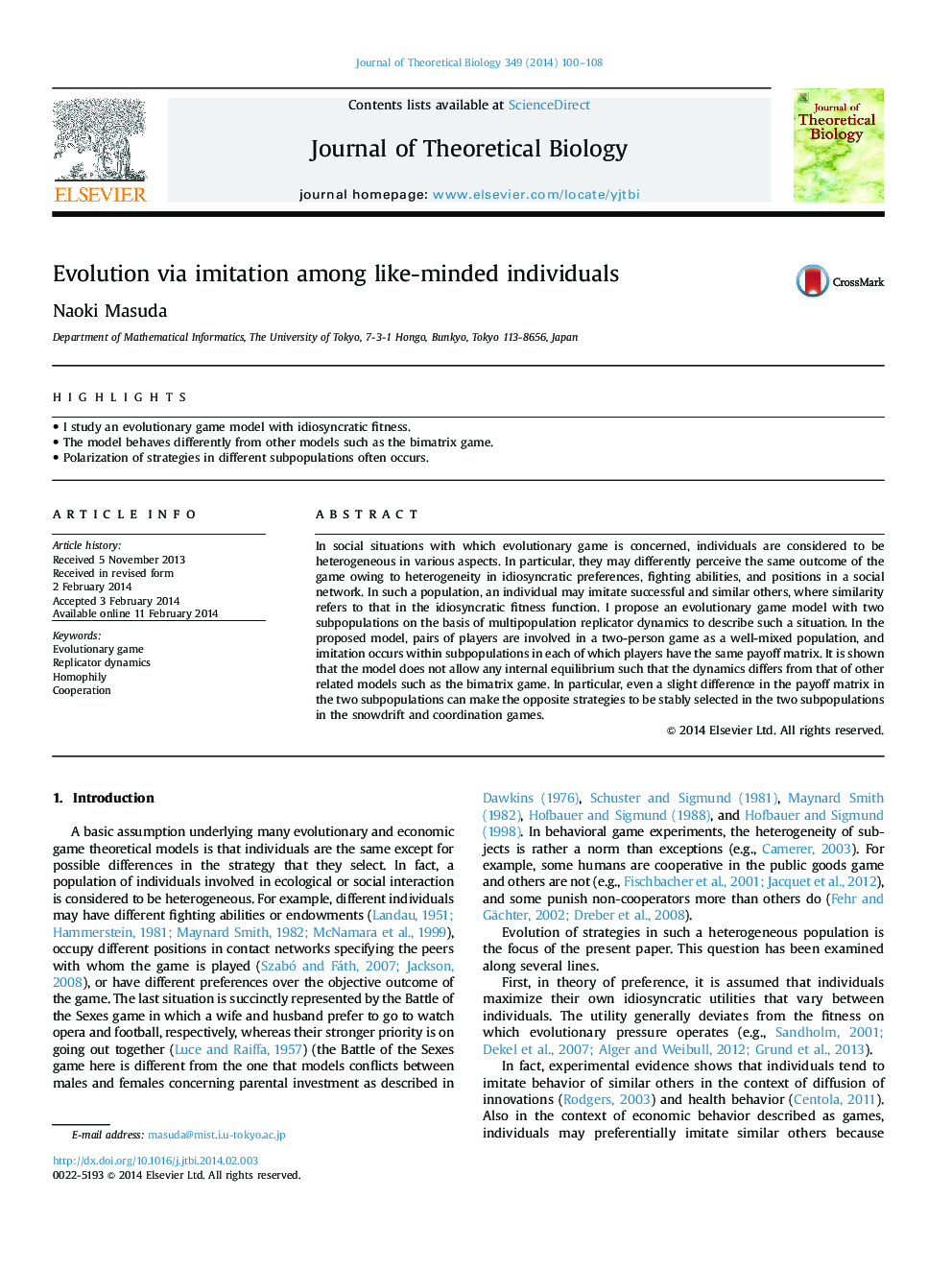| Article ID | Journal | Published Year | Pages | File Type |
|---|---|---|---|---|
| 6370569 | Journal of Theoretical Biology | 2014 | 9 Pages |
Abstract
In social situations with which evolutionary game is concerned, individuals are considered to be heterogeneous in various aspects. In particular, they may differently perceive the same outcome of the game owing to heterogeneity in idiosyncratic preferences, fighting abilities, and positions in a social network. In such a population, an individual may imitate successful and similar others, where similarity refers to that in the idiosyncratic fitness function. I propose an evolutionary game model with two subpopulations on the basis of multipopulation replicator dynamics to describe such a situation. In the proposed model, pairs of players are involved in a two-person game as a well-mixed population, and imitation occurs within subpopulations in each of which players have the same payoff matrix. It is shown that the model does not allow any internal equilibrium such that the dynamics differs from that of other related models such as the bimatrix game. In particular, even a slight difference in the payoff matrix in the two subpopulations can make the opposite strategies to be stably selected in the two subpopulations in the snowdrift and coordination games.
Related Topics
Life Sciences
Agricultural and Biological Sciences
Agricultural and Biological Sciences (General)
Authors
Naoki Masuda,
